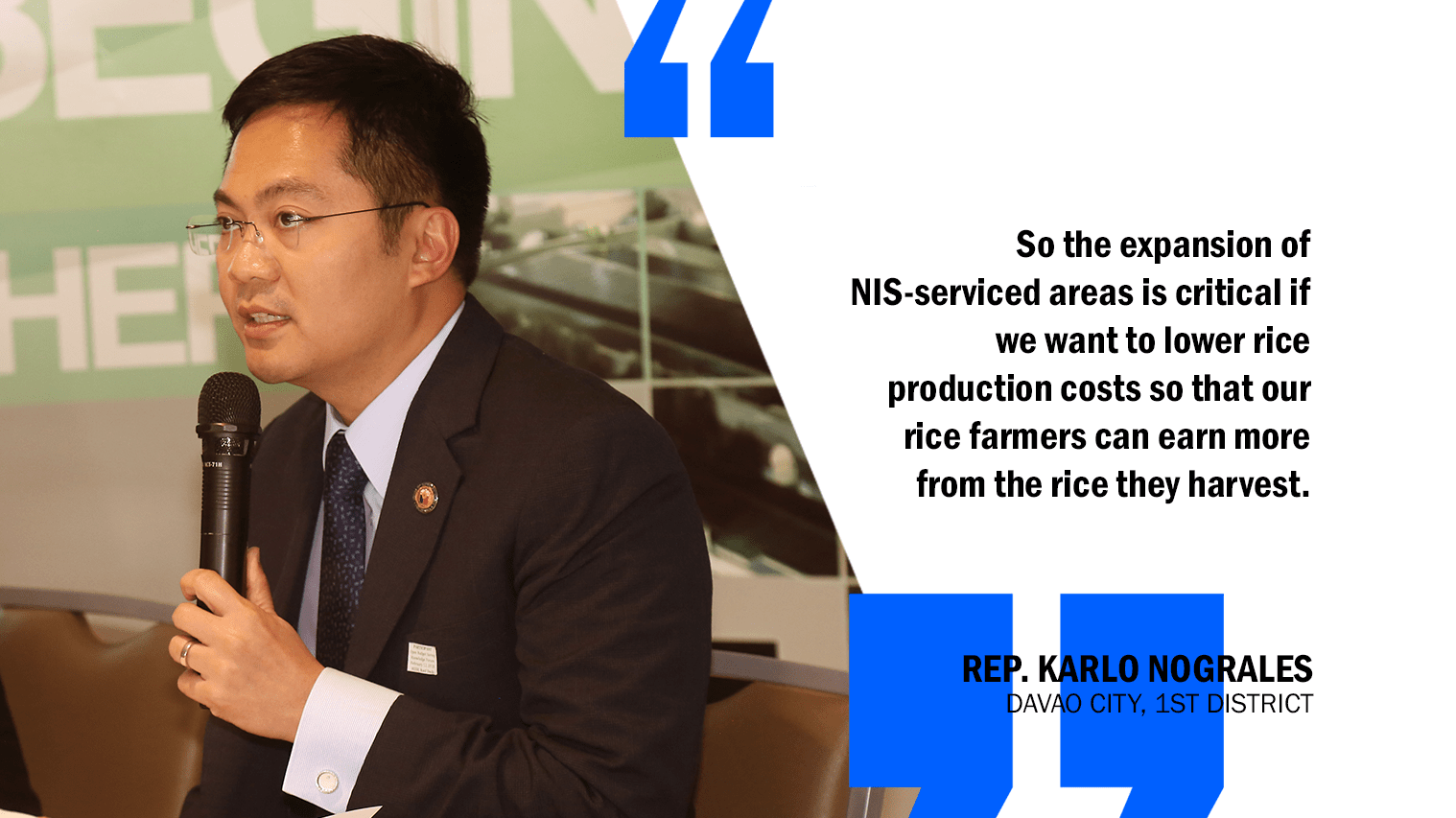With reports of rice prices surging in Zamboanga and threats of similar developments elsewhere, House Appropriations Committee Chairman Rep. Karlo “Ang Probinsyano” Nograles urged the Department of Agriculture (DA) to work with the National Irrigation Administration (NIA) to improve the coverage of the National Irrigation System (NIS) and ensure “rice security” in the country.
“In a country where each individual consumes an average of 111.6 kilograms of rice per year, making sure that we have rice security or a stable supply of affordable rice, should be a top priority,” said the third-term congressman from Davao, who added that increasing rice production should come hand-in-hand with increasing the productivity of rice farmers.
“We’ve long held pride over us being an agricultural country, meaning we’re fed primarily thanks to our hardworking farmers in the provinces––but they need more support. We have to take concrete steps to improve the productivity of rice farmers so that first, they earn more from rice farming; and second, they can sell rice at competitive rates,” added Nograles.
The pro-probinsyano solon’s statements follow the earlier admission of Department of Agriculture (DA) Secretary Manny Piñol during the DA’s House budget hearing that Philippine rice could not compete with the big exporters in the region.
Piñol explained before the Appropriations panel that even if the country could produce surplus rice, the problem is “we could not possibly compete with Vietnam or Thailand in exporting our rice because our rice is more expensive.”
Vietnam and Thailand are the top two sources of imported rice in the Philippines. In 2016, over 80 percent of foreign rice that entered the Philippines came from these two nations.
“We’ve long held pride over us being an agricultural country, meaning we’re fed primarily thanks to our hardworking farmers in the provinces––but they need more support.”
“These countries can produce more rice and sell them at much cheaper prices because of their topography and climate. Over nine million hectares of land is dedicated to rice farms in Thailand, while around four million hectares of land in Vietnam are used for rice. These two countries have also invested billions of dollars to improve rice productivity in their countries,” said Nograles.
One way to bridge the gap between the Philippines and these rice exporting giants, said Nograles, is to increase the country’s irrigated lands and to increase the percentage of farmers connected to the country’s NIS.
According to the DA, around 1.2 million hectares of irrigated land are used for rice farming in the Philippines. The NIS provides irrigation to around 50 percent of the country’s total irrigable area.
“The passage of Republic Act 10969, or the Free Irrigation Services Act––signed by President Rodrigo Duterte earlier this year––could also help lower production costs.”
“This means half of our rice farmers have much higher production costs. For example, rice farmers who are connected to the NIS spend around 2,100 pesos per hectare for fuel costs; on the other hand, those who aren’t connected spend P15,876 per hectare for fuel costs because they need the fuel for water pumps,” revealed the legislator from Mindanao.
“So the expansion of NIS-serviced areas is critical if we want to lower rice production costs so that our rice farmers can earn more from the rice they harvest, while ensuring they can sell their rice at competitive, affordable prices.
“The passage of Republic Act 10969, or the Free Irrigation Services Act––signed by President Rodrigo Duterte earlier this year––could also help lower production costs,” Nograles said.
The law exempts farmers with less than eight hectares and below from paying irrigation service fees for water derived from the NIS and communal irrigation systems.
“We set aside P2.6 billion as subsidies for free irrigation under the existing 2018 national budget. This is a 30 percent increase from the 2017 allocation of P2 billion. This is our way of helping our rice farmers with production costs, and Congress will be there to provide the needed funds,” he said.
Improving the profit margins of rice farmers, said Nograles, would encourage more farmers to produce the food staple, and lead to an increase in the number of hectares dedicated to rice production.
“Having at least two million hectares of irrigated lands would allow us to produce enough rice so that the country is insulated from rice price manipulations and other underhanded tactics by rice traders.”


